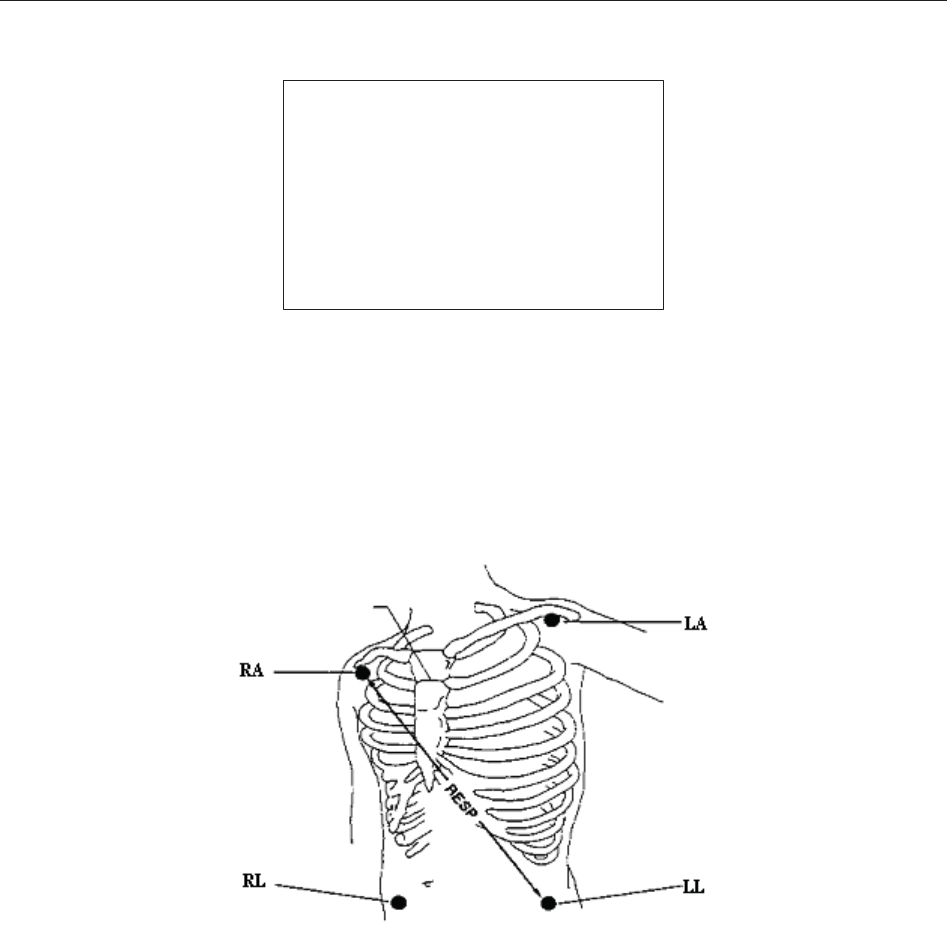User's Manual

Patient Monitor User Manual Monitoring RESP
- 80 -
9.3 Resp Display
Resp
14
30
8
9.4 Electrode Placement for Monitoring Resp
Correct patient skin preparation techniques for electrode placement are important for Resp
measurement: you will find this information in the chapter on Monitoring ECG.
The Resp signal is always measured between two of the ECG electrodes. There are two standard
ECG leads for selection: I lead (RA and LA) and II lead (RA and LL).
Electrodes Placement for 5-lead
9.5 Cardiac Overlay
Cardiac activity that affects the Resp waveform is called cardiac overlay. It happens when the
Resp electrodes pick up impedance changes caused by the rhythmic blood flow. Correct electrode
placement can help to reduce cardiac overlay: avoid the liver area and the ventricles of the heart
in the line between the respiratory electrodes. This is particularly important for neonates.
9.6 Chest Expansion
Some patients, especially neonates, expand their chests laterally. In these cases it is best to place
the two respiratory electrodes in the right mid-axillary and left lateral chest areas at the patient’s
maximum point of breathing movement to optimize the respiratory wave.










